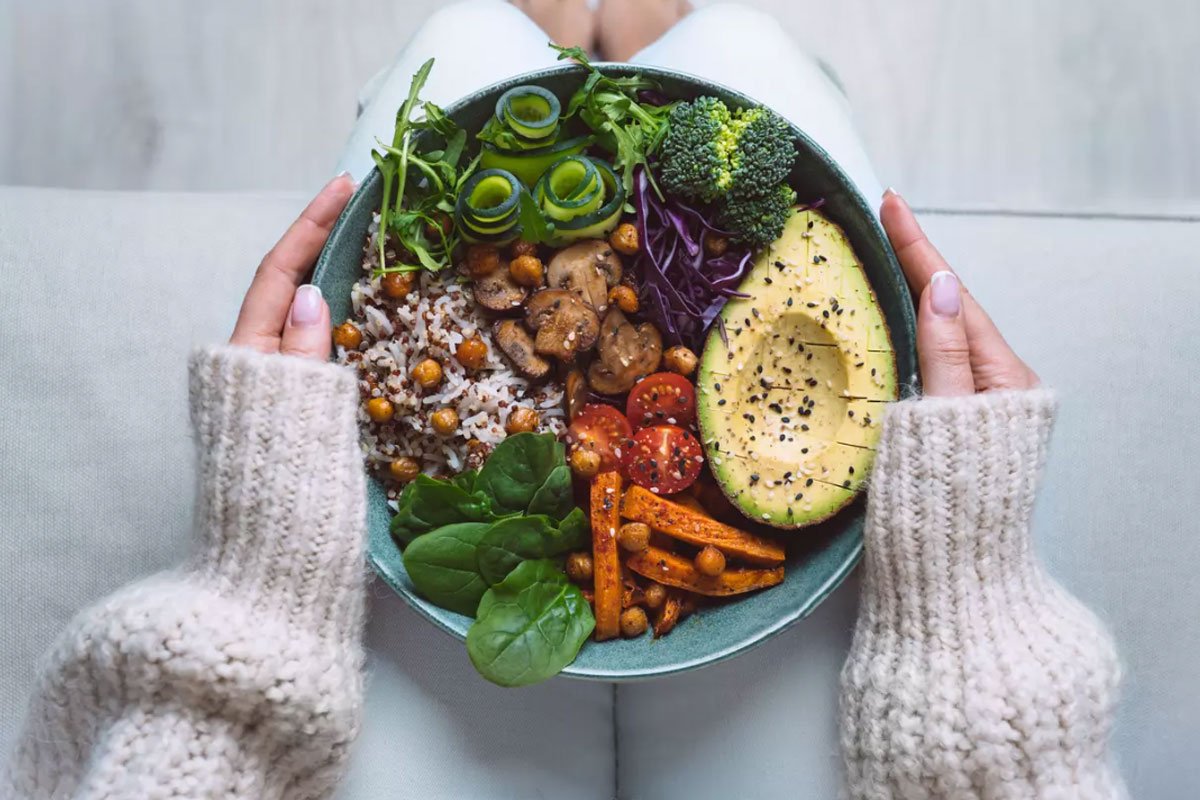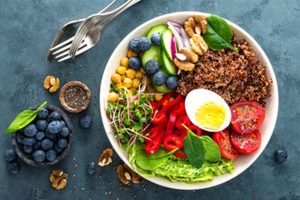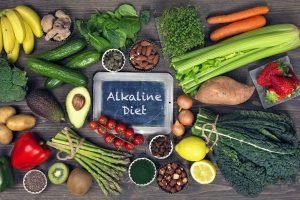Following a vegan diet for weight loss can be an effective and sustainable approach to achieving your health goals while also supporting animal welfare and environmental sustainability. Here’s a comprehensive guide on how to follow a vegan diet for weight loss, including foods to eat, meal planning tips, and strategies for success:
How to Follow a Vegan Diet for Weight Loss:
- Focus on Whole Foods: Base your diet around whole, plant-based foods such as fruits, vegetables, whole grains, legumes, nuts, and seeds. These foods are nutrient-dense, high in fiber, and low in calories, making them ideal for weight loss.
- Limit Processed Foods: Minimize or avoid processed vegan foods such as vegan meats, cheeses, and desserts, which may be high in calories, sodium, and unhealthy fats. Instead, opt for whole food alternatives whenever possible.
- Watch Portion Sizes: While plant-based foods are generally lower in calories than animal products, portion control is still important for weight management. Be mindful of portion sizes, especially with calorie-dense foods like nuts, seeds, and avocado.
- Stay Hydrated: Drink plenty of water throughout the day to stay hydrated and help regulate appetite. Sometimes thirst can be mistaken for hunger, leading to unnecessary snacking.
- Mindful Eating: Practice mindful eating by paying attention to hunger and fullness cues, eating slowly, and savoring each bite. This can help prevent overeating and promote better digestion.
- Regular Physical Activity: Incorporate regular exercise into your routine to support weight loss and overall health. Aim for a combination of cardiovascular exercise, strength training, and flexibility exercises for optimal results.
Foods to Eat on a Vegan Diet for Weight Loss:
- Fruits: Berries, apples, oranges, bananas, grapes, and other fruits are nutritious, low in calories, and satisfying for weight loss.
- Vegetables: Include a variety of vegetables such as leafy greens, cruciferous vegetables, peppers, tomatoes, carrots, and cucumbers in your meals for fiber, vitamins, and minerals.
- Whole Grains: Choose whole grains like quinoa, brown rice, oats, barley, and whole wheat bread, pasta, and couscous for sustained energy and fiber.
- Legumes: Incorporate beans, lentils, chickpeas, and other legumes into your meals for plant-based protein, fiber, and satiety.
- Nuts and Seeds: Enjoy nuts and seeds such as almonds, walnuts, chia seeds, flaxseeds, and pumpkin seeds in moderation for healthy fats, protein, and micronutrients.
- Plant-Based Protein Sources: Include tofu, tempeh, seitan, edamame, and plant-based protein powders in your diet to meet your protein needs and support muscle growth and repair.
- Healthy Fats: Consume sources of healthy fats like avocados, olives, coconut, and cold-pressed oils in moderation for satiety and to support nutrient absorption.
Meal Planning Tips:
- Plan Ahead: Take time to plan your meals and snacks for the week, including shopping for ingredients and preparing meals in advance when possible.
- Balance Macronutrients: Aim to include a balance of carbohydrates, protein, and healthy fats in each meal to support energy levels, satiety, and overall nutrition.
- Batch Cooking: Prepare large batches of grains, beans, and vegetables to use in multiple meals throughout the week. This can save time and make healthy eating more convenient.
- Incorporate Variety: Keep meals interesting and satisfying by experimenting with different flavors, cuisines, and cooking methods. Incorporate a variety of colors, textures, and flavors into your meals for a well-rounded diet.
- Snack Smart: Choose nutrient-dense snacks like fresh fruit, raw vegetables with hummus, air-popped popcorn, or homemade energy balls to keep hunger at bay between meals.
- Listen to Your Body: Pay attention to how different foods make you feel and adjust your meals accordingly. Eat when you’re hungry and stop when you’re satisfied.
Sample Vegan Meal Plan for Weight Loss:
Breakfast:
- Overnight oats made with rolled oats, almond milk, chia seeds, and berries.
- Sliced banana on top with a sprinkle of cinnamon.
Lunch:
- Quinoa salad with mixed greens, cherry tomatoes, cucumber, bell peppers, chickpeas, and avocado.
- Balsamic vinaigrette dressing on the side.
Snack:
- Carrot sticks with hummus.
- Handful of almonds.
Dinner:
- Stir-fried tofu and mixed vegetables (such as broccoli, bell peppers, and snap peas) in a ginger garlic sauce.
- Brown rice or quinoa on the side.
Dessert (optional):
- Fruit salad with diced mango, pineapple, and kiwi.
Final Tips:
- Be Patient: Weight loss takes time, so be patient and consistent with your efforts.
- Seek Support: Consider joining a vegan support group or working with a registered dietitian for personalized guidance and support.
- Focus on Health: Remember that weight loss



